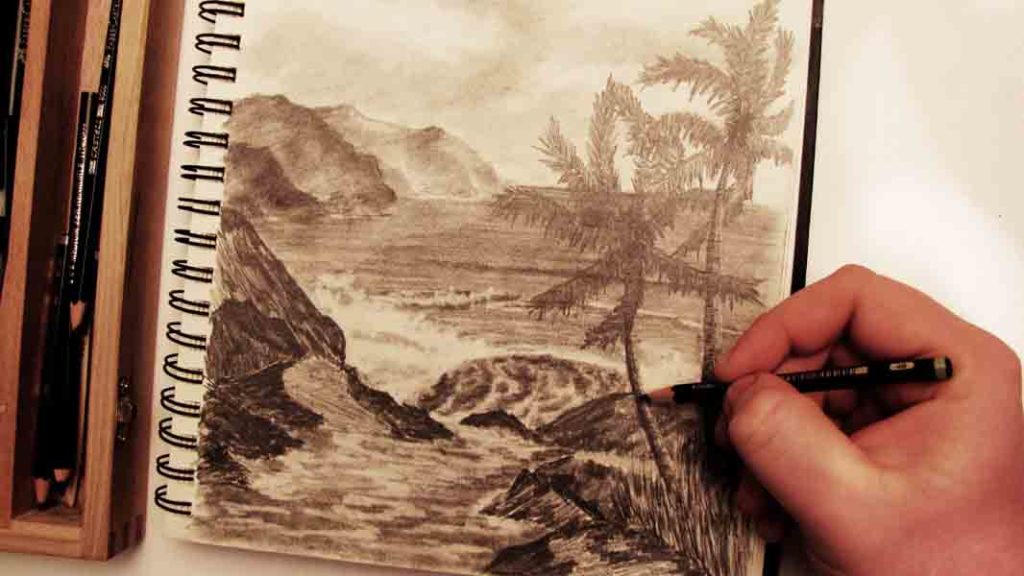To make a fruitful picture, we should explore different light impacts and peculiarities of discernment. This can frequently be baffling! In any case, similar difficulties will dependably manifest paying little mind to your subject or medium. Regardless of whether you’re figure drawing, painting still lifes, pastel illustration or working plein air, the standards are a similar with regards to esteems.
Top tips for attracting highly contrasting
In the event that you are hoping to make reasonable and practical pictures, there are some key plans to get to holds with, and having a few techniques to hand to help take care of basic issues will enable your work to stream all the more easily.
The more we hone, the more instinctive working with values progresses toward becoming. For as far back as ten years, I’ve considered and shown drawing and painting, getting some valuable guidance and tips for how to draw en route. In this workshop I’ll impart a portion of these tips to you. We should begin…
01. Isolate light and shadow
This is the establishment for all shading choices. First make a refinement between the ‘light family’ and the ‘shadow family’ (appeared previously). The light family comprises of all regions that are contacted specifically by the light source. A decent method to test this is to take a gander at your subject from the heading of the light, so you can perceive what the light can ‘see’. The shadow family comprises of everything that is escaped the light source. This incorporates all shadows and reflected light zones.
02. Utilize an esteem scale
An esteem scale is an apparatus that will enable you to comprehend tonal connections. I prescribe a nine-advance scale since it has a center esteem. You can influence an incentive to scale by checking nine swatches, as appeared previously. At that point, utilizing light lines, start with swatch 1 (as dim as you can go) and 9 (leaving as simply paper). At that point include a gauge for tone 5 in the center. Presently, include tones 3 and 7. Add the rest of the tones to finish the scale. For more points of interest, see my instructional exercise.
03. Relativity of significant worth
Our view of how brilliant something is changes relying upon what encompasses it. The case above demonstrates a similar 50 for every penny dim encompassed by high contrast. Would you be able to perceive how the dim looks substantially darker against the white foundation? This impact happens all the time when we draw from perception and it can truly divert from our esteem judgements.
04. Light impacts
As light hits a question, there are numerous impacts to know about. Tap on the graph underneath to perceive how light overflow a question and makes regions of light and shade.
05. Reflected light
Drawing right reflected lights gives an extraordinary feeling of volume. To make a reasonable feeling of light, it’s vital to comprehend what influences the force of roundabout (reflected) light.
The first is neighborhood esteem. This is the ‘genuine’ splendor of a question, autonomous of light impacts. Lighter materials reflect light more unequivocally than darker materials.
Another factor is remove – the further reflected light needs to movement, the weaker it gets. The picture here demonstrates the impact of separation on a white material with greatest intelligent quality.
Parchment left to right in the exhibition above with the bolts to see these impacts in real life.
06. Three normal shading botches
The primary basic shading botch is making reflected lights too light (1). This makes disarray amongst halftones and reflected lights, making it troublesome for the watcher to decipher the picture. The second is making light halftones excessively dim (2). This outcomes in a filthy look. The third is making dim halftones too light (3), which detracts from the feeling of frame.
07. Influence an incentive to think about
Get your head around confounding qualities by sorting out them into bunches in a different illustration (an esteem think about). The objective is to outline the picture by gathering comparable tones together. Four or five esteem bunches are perfect. Characterize the lightest and darkest tones, at that point discover a few tones that are most normal in the picture. Do your best to consolidate comparative qualities. You should now have a reasonable arrangement for building up esteems.
08. Test your comprehension
It’s constantly great to direct analyses. Work with both fake and characteristic light and note the distinctions. Experiment with an assortment of media so as to figure out how to exploit each. Attempt and make pictures from creative ability. Would you be able to recollect each of the 11 impacts from tip #4? Is it accurate to say that you are effectively staying away from the three regular shading botches? The picture above shows diverse understudies’ illustrations of John Asaro’s Planes of the Head, shading 100 for every penny from creative energy.
09. Constrained range and esteem pressure
An esteem extend depicts how huge the range is between the lightest light and darkest dim. Every medium has its own particular range. Nature has a huge range: from the brightest light (the sun) to the darkest dim (finish obscurity). Regularly it is hard to coordinate the scope of nature in your specialty. The arrangement is to reduce differentiate at the two closures of the range.
10. The light guide
To comprehend the light in a scene, draw a little circle and demonstrate the light heading, the shine of the shadows, and the quality of reflected light. In a mind boggling picture, you can make a light guide for singular items. To think about nature, hold up an egg in various light situations and watch how these three angles change in various conditions.











Leave A Comment